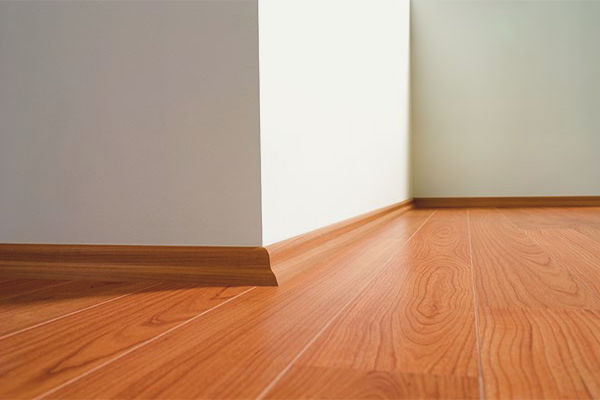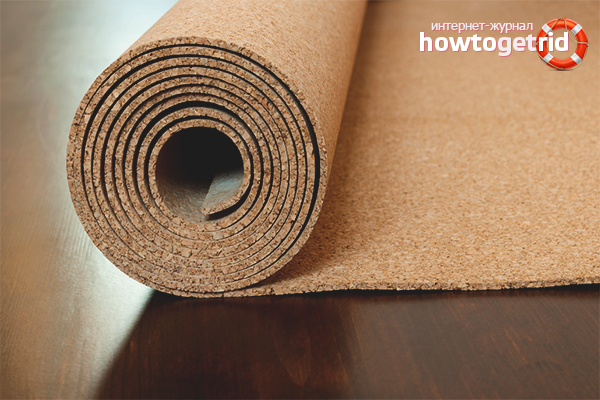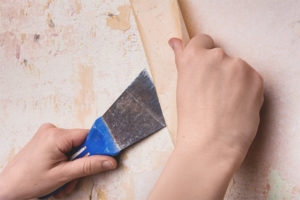The content of the article
Laminate - flooring, which has recently supplanted many materials. Price category and a variety of structural patterns satisfies the needs of any category of consumers. The competent attitude to this product of finishing works in the course of preparation and installation will thank you for a long service life. One of the basic requirements is a perfectly flat concrete or wooden base on which it is placed.
Why should we eliminate the unevenness of the floor
The main material for the manufacture of laminate are sawdust, so its strength characteristics are not designed for additional loads. The uneven surface of the floor leads to deformation of the interlocking connection of the laminate, as a result of which the joints start to run. Panels gradually swell and become unusable.Laying laminate on a concrete floor, even with the slightest irregularities, bumps and height differences can not be.
The presence of depressions also has a negative effect. In such places, the panels bend, making not very pleasant sounds while walking. In addition, any unevenness leads to the formation of cracks in the web.
Wood floor leveling
You can fix the unevenness of the wooden base yourself by choosing the most suitable method for your conditions:
- lay plywood;
- remove defects with an electrical planer or grinder.
Getting started, carefully check all wooden flooring. Boards should be dry and signs of decay should be absent. Even the slightest hint of such defects requires partial replacement of the floor. Otherwise, bloating of the boards may occur, leading to deformation of the laminate.
Level the floor with plywood when there are a lot of irregularities or no grinding tools. The material for the base must meet the requirements of moisture resistance. Plywood flooring has several advantages:
- small weight;
- the ability to perfectly level the surface;
- reduces labor costs;
- can withstand heavy loads;
- affordable cost;
- It is not exacting in use.
Sheets of plywood do not stack entirely, and cut into pieces so that there are no long seams. First install the fixing slats that prevent the sheets from shifting, which are laid with the seam running apart. And the plywood itself is better to lubricate with oil paint, thus enhancing the water-repellent effect. For mounting use screws, caps which should be deepened so that they do not come into contact with the laminate.
Having chosen the second method for eliminating uneven floors, first deepen the caps of screws and nails. Only after that grind to complete alignment of the surface.
Use of PVA glue and sawdust
This method for eliminating uneven wooden floors tested by time and professionals. Prepare a not very liquid composition by mixing sawdust with white glue. Strongly level on the floor, fasten the guides, and fill the space between them with the mixture. And so two or three layers, waiting for the previous one to sit. After complete drying, cover the sheets of plywood, fixing them.
Leveling concrete base
At first glance, a concrete floor is an excellent basis for laying laminate. However, in the process of work, unforeseen problems arise. Rather, they will have to feel at the stage of operation of the floor covering, the service life of which will decrease when the base is uneven. Check bumps with the help of construction level. Allowable differential ranges from 2 mm to 3 mm. Elimination of errors is required if the barrier is exceeded.
This type of floor base is most common in apartments and has the highest number of defects:
- concrete nodules;
- cracks;
- plane drops;
- potholes and chips;
- delaminated areas.
Each of these deficiencies requires its elimination. And the methods used to level the floor depend on the specific flaw.
- A small number of concrete bumps can be cut with a chisel or sawed with a grinder. The use of a conventional cutting wheel will lead to its destruction. For concrete, you need a special circle, which is used in working with tiles. Large flows can be eliminated by applying a punch.
- A small number of cavities are equalized by pouring them with mortar. With significant defects in the screed, the surest solution is self-leveling floors.In this way, numerous and various disadvantages can be leveled. First you need to clean the concrete surface from the remnants of the old clean floor. Potholes, cracks, chips are filled with cement mortar. Large nodules get off, small ones can be left, they will be filled with a tie. Treat the prepared surface with a primer. To be sure, walk around the perimeter of the room and mark the level of the sub floor on the walls. When mixing the solution, keep in mind that the mixture should be thick. Then it will not spread, and the possibility of the emergence of new irregularities is excluded. Let the first layer dry. At the final stage, prepare a self-leveling mixture or, if possible, buy ready-made. The consistency should be such that the solution spreads naturally, creating a perfectly smooth surface. Laying laminate is possible only when everything is completely dry.
- When laying the panels on concrete floors, dust appears. This is not scary during installation, but the problem arises during the operational period. First, dust from the screed settles between the joints and subsequently penetrates the room.Secondly, its particles interfere with the snug fit of the panels, which again leads to deformation. Therefore, it should be with the device of the laminate floor to adhere to the advice of experts.
Recommendations for laying laminate on a concrete base
To dust the screed, apply a primer to the surface, preferably in several layers. It is recommended to lay a plastic film under the clean floor, which will protect against dust penetration and at the same time serves as a vapor barrier. This method is used to avoid moisture from the concrete solution on the laminate.
Leveling the floor using the substrate
To level a wooden floor is more difficult, than concrete, on technological process and longer on time. One of the easiest ways to eliminate irregularities of any kind of floors is to make a leveling substrate, but this is possible provided that the errors are very minor. The accompanying instructions for each type of material indicates what size errors can eliminate the product. Leveling ability depends on the thickness of the substrate and its density.Can be used for uneven concrete, wood flooring, linoleum floor, plywood, etc.
Types of substrates:
- polyurethane;
- cork bitumen;
- polyethylene foam;
- natural cork.
Each of the listed materials is laid on the surface of an uneven base. If the draft floor is concrete, it is recommended to pre-lay a layer of polyethylene. The surface itself must be thoroughly cleaned, even from small debris. Initially, the first row of the substrate is laid immediately before the installation of laminate plates, and each subsequent overlap is about 30 cm. Secure the seams with adhesive tape or tape. Neither the laminate nor the floor to the substrate are not attached.
All types of such leveling materials have excellent characteristics: insulation, strength, softness. Therefore, it is desirable to lay a substrate layer on the aligned surfaces.
Replacing the floor covering of linoleum on a more current laminate is carried out according to the generally accepted principle. When the floor is flat, you can safely lay the canvas on top. But if there are irregularities, you will have to tear off the old material, clean the pollution, and then carry out the whole range of activities,as described above depending on the type of rough base.
Do not accelerate the process by ignoring the above recommendations. The result may be a partial or complete disassembly of the laminate, additional financial costs, nerves and time spent.
Video: how to lay laminate













To send